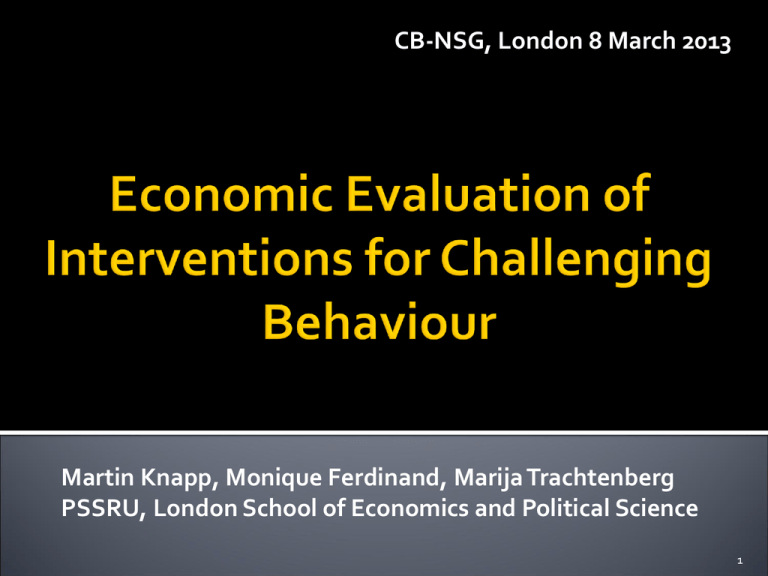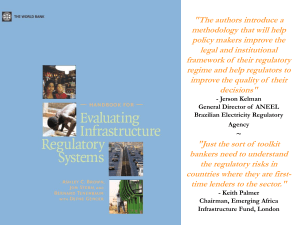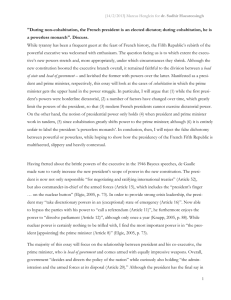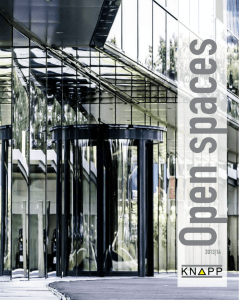costs and benefits of early intervention
advertisement

CB-NSG, London 8 March 2013 Martin Knapp, Monique Ferdinand, Marija Trachtenberg PSSRU, London School of Economics and Political Science 1 Sample of 930 people living in residential accommodation (11 NHS trusts, 4 vol orgs, 3 private providers) in 1996 Mild CB Moderate CB Severe CB 750 500 250 0 Mild LD Moderate LD Comas et al (2001); Knapp et al (2005) Severe LD … what people need and what they want; … what care and support arrangements can meet those needs and satisfy those wants; … what staff and other inputs are employed to deliver the associated services; … what are the costs of employing them; and … where and how to raise the funds to meet those costs. Importantly, they also want to know: … what outcomes are achieved; and … whether those outcomes are worth the cost that is spent to produce them Social care Family Social context Emply’t Income Resilience Trauma Events Needs for care and support Housing Education Crim justice Benefits Employment Vol sector Income Mortality Different agencies and budgets Health care Genes … outcomes that are worse Outcomes that are better Costs that are higher Costs that are lower 5 … outcomes that are worse Costs that are higher Outcomes that are better A non-starter Costs that are lower 6 … outcomes that are worse Costs that are higher Outcomes that are better A non-starter Costs that are lower A winner – but check the timing and spread of impacts 7 … outcomes that are worse Costs that are higher Outcomes that are better A non-starter A delight to Costs that A winner – but check penny-pinchers; are lower but unpopular with the timing and spread everyone else of impacts 8 … outcomes that are worse Costs that are higher A non-starter A delight to Outcomes that are better ?? Do the outcomes justify the higher costs? Costs that A winner – but check penny-pinchers; are lower but unpopular with the timing and spread everyone else of impacts 9 Research led by Angela Hassiotis (UCL) Compared specialist behaviour service (added to standard provision) with standard provision alone. All staff in the specialist service had received training in order to deliver treatment based on applied behaviour analysis. Randomised controlled trial (n=63 adults) Outcomes better on the Aberrant Behavior Checklist 6 months after randomisation. Costs were no different between the groups. So the specialist team seen to be cost-effective. Hassiotis et al (2009, 2011) Weekly cost, 2002/03 prices Costs initially higher in the community than in hospital. BUT outcomes were better (self-care skills, choice, participation, social integration, expressed satisfaction) Knapp et al (1992); Hallam et al (2006); Forrester-Jones et al (2012) We are looking at the economic case for interventions to meet the needs and respond to the preferences of people with challenging behaviour Part of a project funded by the NIHR School for Social Care Research. We did not have the time or resources to set up new ‘trials’ (or similar) collecting primary data. Instead, we are working with existing services and (mainly) extant information from previous research to ‘model’ the costs and benefits. ITSBS aims to enable young people with LD and challenging behaviour to remain within their family and community settings. Provides: (1) intensive support and clinical psychology input with the young person, family, and frontline workers, and (2) an extended short break (as required) Success story in Ealing: 23 clients since 2009, no child with LD placed in long-term care due to their challenging behaviour. Multi-agency: Based within Ealing Services for Children with Additional Needs (ESCAN); funded by the local authority; team led by two clinical psychologists (Catherine Sholl & Caroline Reid) Collaborative initiative: involving clinical psychology, social services and short breaks services; plus ‘usual care’. 13 Costs: • 0.8* FTE Clinical Psychologist *Increased to 1 FTE in March 2013 • 1 FTE Assistant Psychologist • Approx. 8 extended short breaks packages annually Benefits: • Client remains in community, and out of residential placements • Challenging behaviours reduced • Families report increased ability to cope Main economic benefit = costs avoided / saved, both shortterm and longer term. We are now estimating those costs and benefits. 14 ITSBS Intervention C Probability (5%) cost benefit A probability cost Usual costs + Intervention costs, with uptake, dropout rates applied… Long-term care D Probability (95%) cost benefit Stays within home Child with LD + CB Usual care B probability cost Treatment as usual costs health service, social care… C Probability (?) cost benefit Long-term care D Probability (?) cost benefit Stays within home A+C Expected CostsExpected Benefits A+D Expected CostsExpected Benefits B+C Expected CostsExpected Benefits B+D Expected CostsExpected Benefits Analysis and collection of extant data: • • • Length of time in ITSBS Cost per client (i.e. contact time, short breaks, case studies) Client Service Receipt Inventory (CSRI) to describe full care and support patterns (and hence costs) 16 Client C: 2009-2010 Item Unit Costs Phase 1: Assessment Clinical Psychologist (£68 per hour) Phase 2: Intensive Therapy Phase 3: Short Break Short Break Phase 4: Maintenance (£1876 / Closing Case weekly) Total Costs Sessions Client 13: 2011 – 2013 Total (£) Sessions Total (£) 7 £476 15 £1020 86 £5 848 35 £2380 3 weeks £5,628 n/a £0 1 £68 7 £12, 020 £476 £3,876 17 Looked after child – ‘Median cost’ ( 14 months) Item Care Planning Maintaining the Placement Finding Next Placement Review Legal Cost to(2012) Local Curtis Looked after child – ‘High Cost’ (18.5 months) Unit costs Total Unit costs Total £240 x 3 £720 £240 x 2 £480 £696 x 87 weeks minus £5,238 £55,314 £293,741 £293,741 £310 £310 £415 £415 £815 x 3 £2,445 £10,139 £10,139 £10 x 87 weeks £843 £618.54 +£1,233 £1,851 18 Analysis and collection of extant data: • • • Length of time in ITSBS Cost per client (i.e. contact time, short breaks, case studies) Client Service Receipt Inventory (CSRI) to describe full care and support patterns (and hence costs) Find and analyse suitable comparison data • What would ‘treatment as usual’ have been in Ealing? Look at patterns of placement pre-2009? Or in another London borough? • Seek data from elsewhere to compare with that collected on the young people in Ealing (using the Developmental Behavioural Checklist) comparison • Also compare data using CSRI from other studies. 19 We have a little scope for exploring other interventions in this area. Please do send us suggestions / comments / information. 20 Thank you Email us for more information m.knapp@lse.ac.uk m.ferdinand@lse.ac.uk 21 Adelina Comas-Herrera et al (2001) Benefit groups and resource groups for adults with intellectual disabilities in residential accommodation, Journal of Applied Research in Intellectual Disability, 14, 120-140. Lesley Curtis (2012) Unit Costs of Health and Social Care 2012, Canterbury: PSSRU, University of Kent. Rachel Forrester-Jones et al (2012) Good friends are hard to find: the social networks of people with mental illness 12 years after deinstitutionalisation. Journal of Mental Health, 21, 4-14. Angela Hallam et al (2006) Service use and costs of support for people with learning disabilities twelve years after leaving hospital, Journal of Applied Research in Intellectual Disabilities, 19, 296308. Angela Hassiotis et al (2009) Randomized, single-blind, controlled trial of a specialist behavior therapy team for challenging behavior in adults with intellectual disabilities. American Journal of Psychiatry 166(11):1278-85. Angela Hassiotis et al (2011) Applied behaviour analysis and standard treatment in intellectual disability: 2-year outcomes. British Journal of Psychiatry 198(6), 490-1. Martin Knapp et al (1992) Care in the Community: Challenge and Demonstration, Avebury, Aldershot. Martin Knapp et al (2005) Intellectual disability, challenging behaviour and cost in care accommodation: what are the links? Health and Social Care in the Community, 13, 297-306. 22









